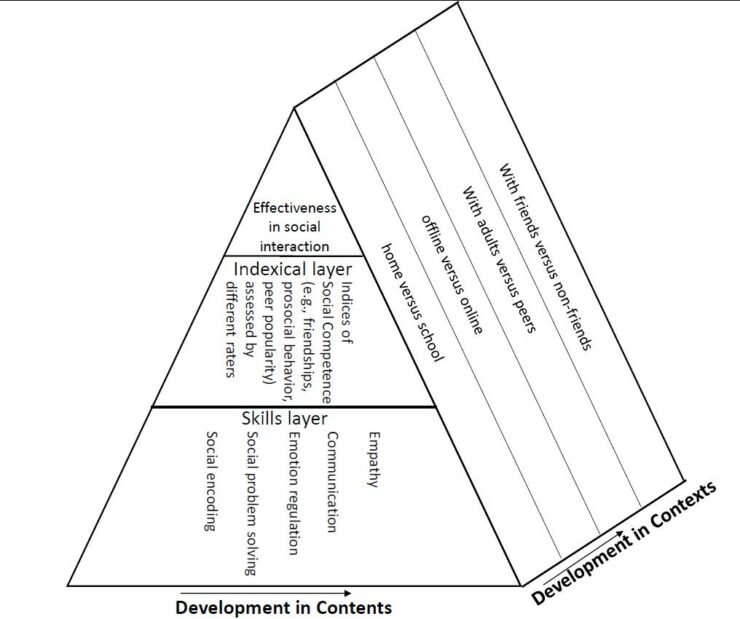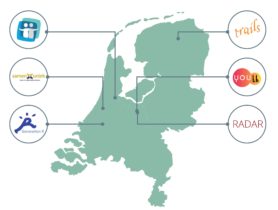News
The building blocks of social competence
by Caroline Junge (Senior researcher YOUth cohort, Utrecht University)
The Consortium on Individual Development (CID) aims to contribute to a model that captures the development of social competence in a changing society. Such a model provides crucial information to optimize interventions aimed at improving a child’s social competence.
Social competence refers to the ability to engage in meaningful interactions with others. It becomes increasingly clear that social competence is of fundamental importance in society. Indeed, there is ample evidence that variation in social competence in childhood is linked to prowess in other domains in present and later life, such as health, academic success, and happiness. It is important to note that social competence does not represent a fixed quality but should be viewed as a construct that in itself marks development: society expects more sophisticated interactions with older children. However, a detailed picture of the development of social competence from infancy to adolescence is still missing. Knowledge about development in (a) underlying skills, (b) the interaction contexts, and (c) measures of social competence all contribute to a better understanding of social competence, which is why we consider these three types of knowledge as relevant dimensions, that is as crucial building blocks, to characterize development in social competence.
Adding a developmental perspective to a social competence model

Fig. 1. CID’s adaptation of Rose-Krasnor’s model of social competence (Rose‐Krasnor, 1997; Rose-Krasnor and Denham, 2009), adding a developmental perspective.
We propose to build on an existing theoretical model: the prism model of social competence put forward by Linda Rose-Krasnor (1997; Rose-Krasnor & Denham, 2009). This model does not focus on the development of social competence, but describes the different elements required for establishing good social interaction. We add a developmental framework as we make concrete how various indexes of social competence, together with multiple skills subserving social competence, and the variety of contexts of social interaction are all relevant dimensions of social competence that change over development. For instance, at the skills layer we consider those skills that form the key foundations for being effective in a variety of social interactions, such as empathy, social encoding, and emotion regulation, each of which are complex constructs of themselves, and which possibly also differ across developmental stadia.
How CID helps integrate the whens, whats, hows and wheres of social competence
 Together the six CID cohortsprovide an overview of social competence spanning from 20 weeks’ pregnancy (YOUth cohort) to far into adulthood (e.g., RADAR, TRAILS). These data help build a developmental model of social competence that integrates the whens (age periods), whats (indexical layer), hows (skills -dimension) and wheres (context-dimension) of social competence.
Together the six CID cohortsprovide an overview of social competence spanning from 20 weeks’ pregnancy (YOUth cohort) to far into adulthood (e.g., RADAR, TRAILS). These data help build a developmental model of social competence that integrates the whens (age periods), whats (indexical layer), hows (skills -dimension) and wheres (context-dimension) of social competence.
To illustrate, take the skills-dimension. The CID cohorts address each of the five identified skills in repeated measurements collected in multiple ways spanning development from infancy into adulthood: through questionnaires, experimentally, and in parent-child interaction tasks. While each of these skills shows development, they often differ in their trajectories, and operate at different time scales at which they are more influential for social competence than others. With these incoming data sets, we can reveal how a range of underlying skills across development together shape the development of social competence.
Interdisciplinary collaboration is instrumental
Even so, fully capturing (the range in) the development of social competence requires integrating biological, psychological and environmental factors, and insights into how these processes influence one another over time. In-depth understanding of individual differences in social competence begs a more detailed understanding of each of the descriptive levels of analysis, ranging from the molecular to the behavioural level, and how these levels link to each other both at the same time and across development. However, to date it has been virtually impossible to predict which combinations of factors at which times explain individual variability in the development of social competence. It is here that the Consortium on Individual proves instrumental to building a developmental model of social competence as it accommodates the various disciplines of research that examine the development of social competence in both online and offline interactions as well as possess the statistical knowledge to integrate these findings.
More information
Caroline Junge, Patti M. Valkenburg, Maja Deković, Susan Branje (2020) The building blocks of social competence: Contributions of the Consortium of Individual Development Developmental cognitive neuroscience DOI: 10.1016/j.dcn.2020.100861
This paper is part of a special issue in Developmental cognitive neuroscience about the Consortium on Individual Development. For an overview of all papers go to here
